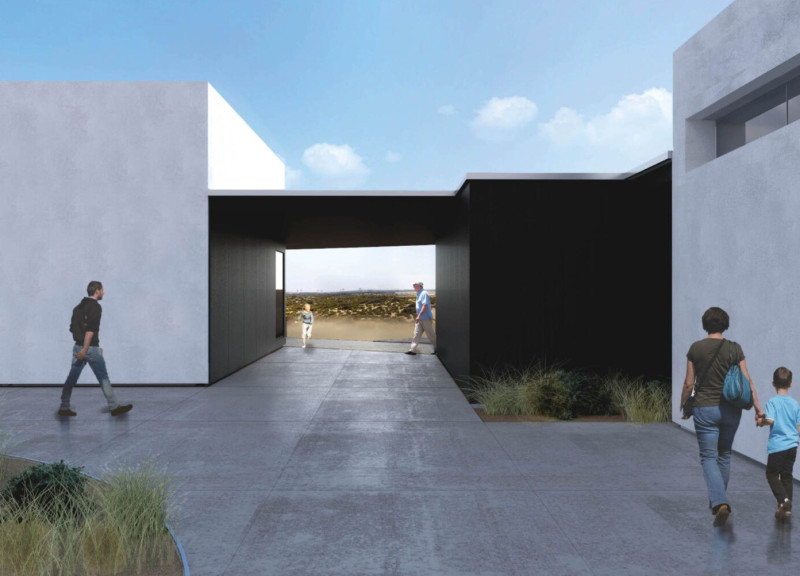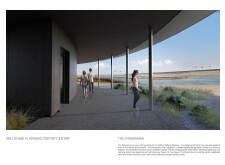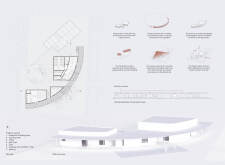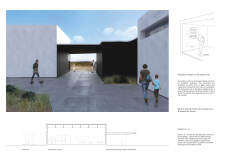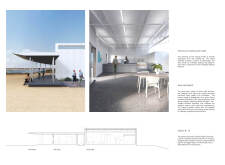5 key facts about this project
The Abu Dhabi Flamingo Visitor Center, known as The Panorama, sits within the Al Wathba Wetland Reserve and serves to enhance engagement with the region's unique natural environment. This center offers a space for visitors to learn about and observe local wildlife, particularly flamingos. The design concept highlights a radial experiential pathway that combines walking, viewpoints, and educational displays, creating a rich interaction with nature.
Architectural Concept
The main goal of the design is to connect visitors with the wetland experience. The radial pathway acts as both a route for circulation and as a viewing terrace, encouraging exploration of the area. By focusing on enjoyment and education, the layout promotes a better understanding of the relationship between the environment and architecture.
Spatial Organization
The Panorama's layout consists of three primary volumes that house key functional areas, including a reception area, training room, office, gift shop, and café. These spaces are arranged around a central ring that integrates the exhibition area and visitor circulation. This plan ensures that movement through the center feels easy and natural while maintaining views of the wetland landscape at all times.
Exhibition Features
The exterior wall features embedded display windows meant for showcasing local specimens. These windows use resin or glass to protect the exhibits while allowing visitors to see them clearly from inside and outside. This design enhances the educational aspect of the center by making it possible to learn about local wildlife while enjoying views of the wetland.
Design Elements
The entrance is conveniently located for visitors arriving from the parking area. A raised walkway leads them into the visitor center and creates a sense of arrival. This pathway also allows for flexible seating, inviting people to pause and appreciate the surroundings. Additionally, the large canopy offers shade and is oriented toward the wetland, reinforcing the connection between the building and the natural landscape.
The careful design of the exhibition windows not only facilitates learning but also enriches the overall visitor experience, providing opportunities to observe the diverse wildlife that calls the wetlands home.


